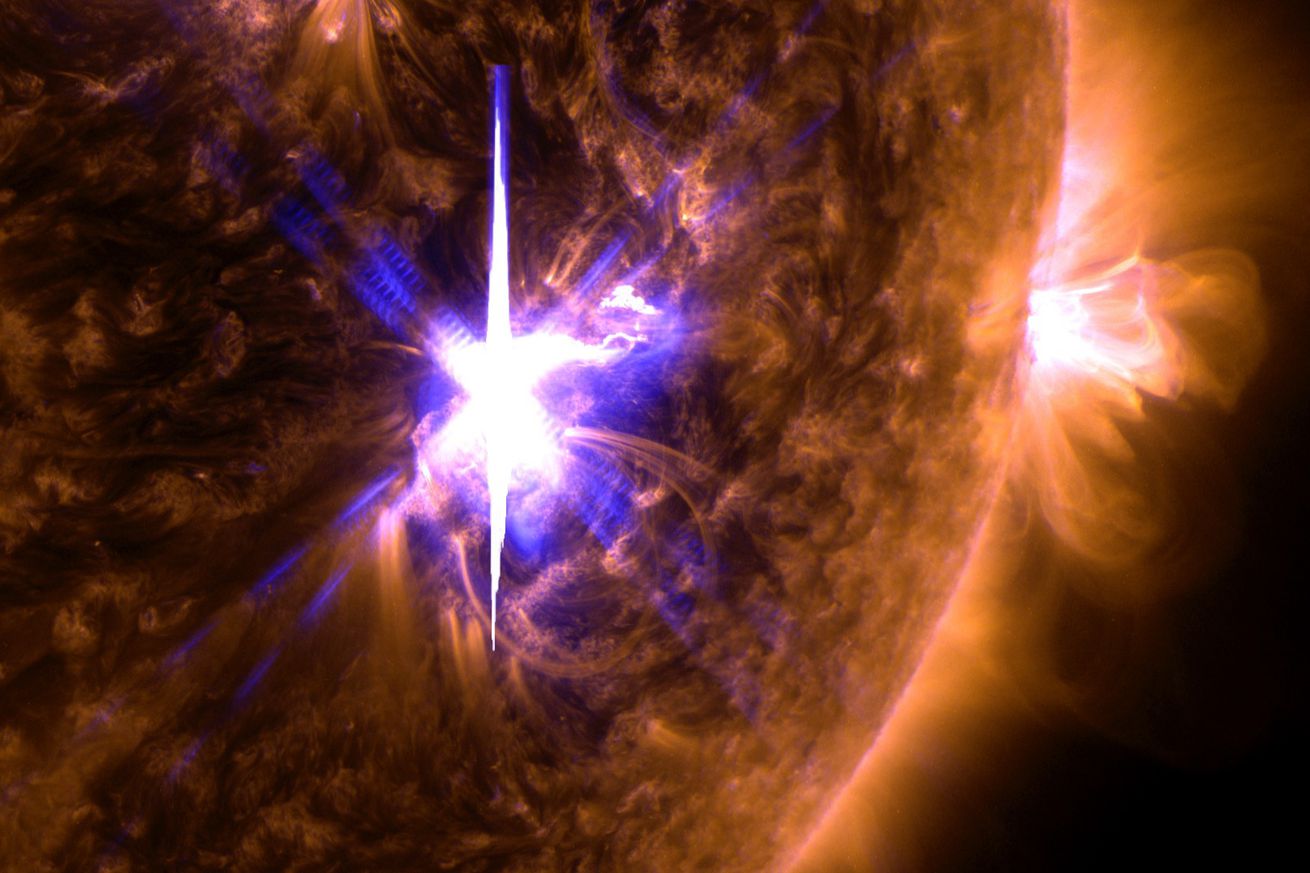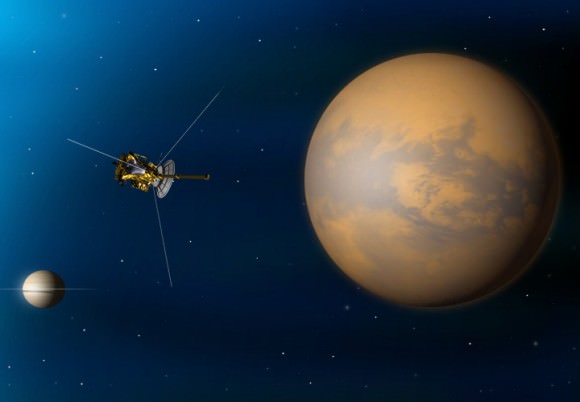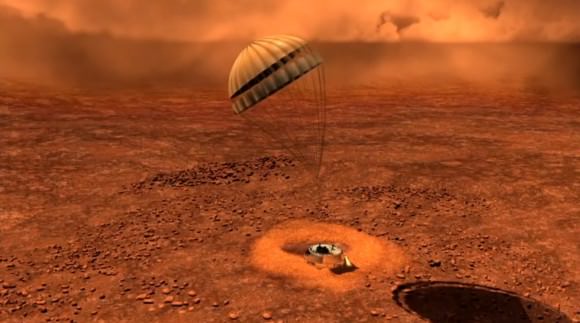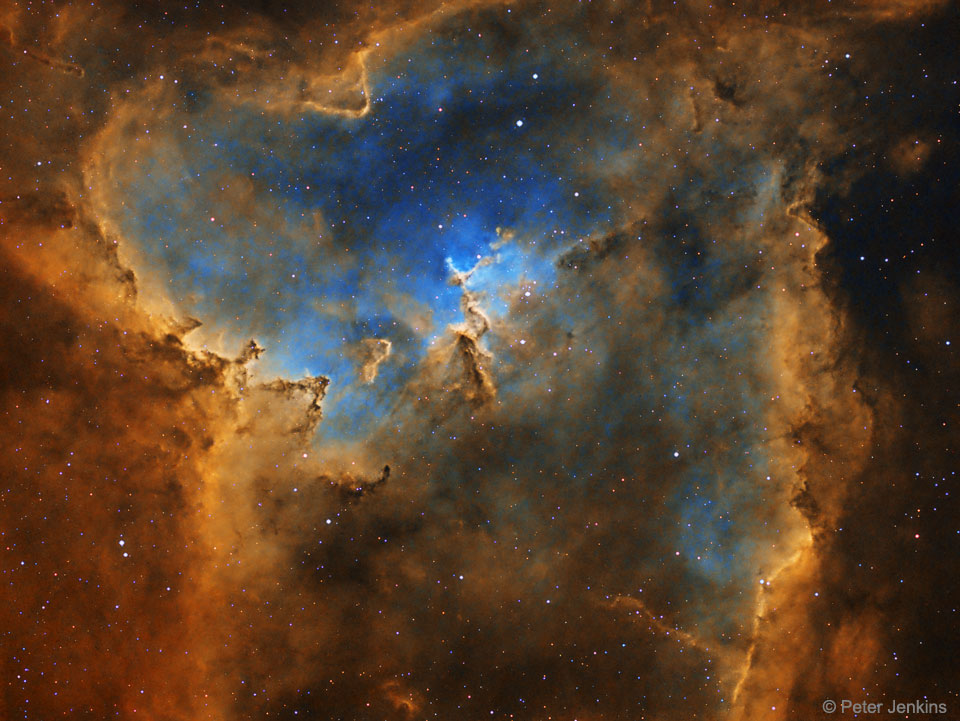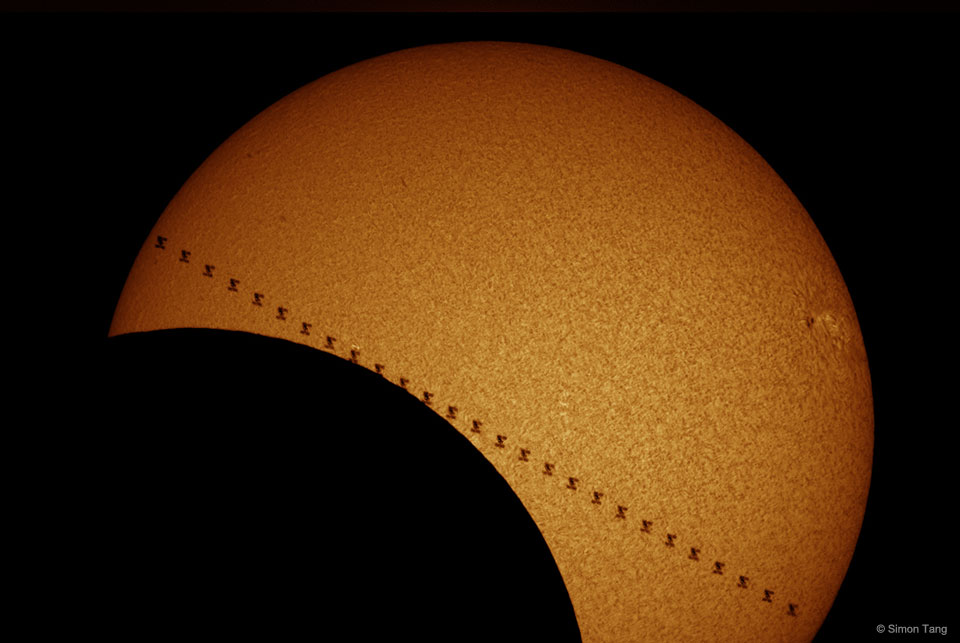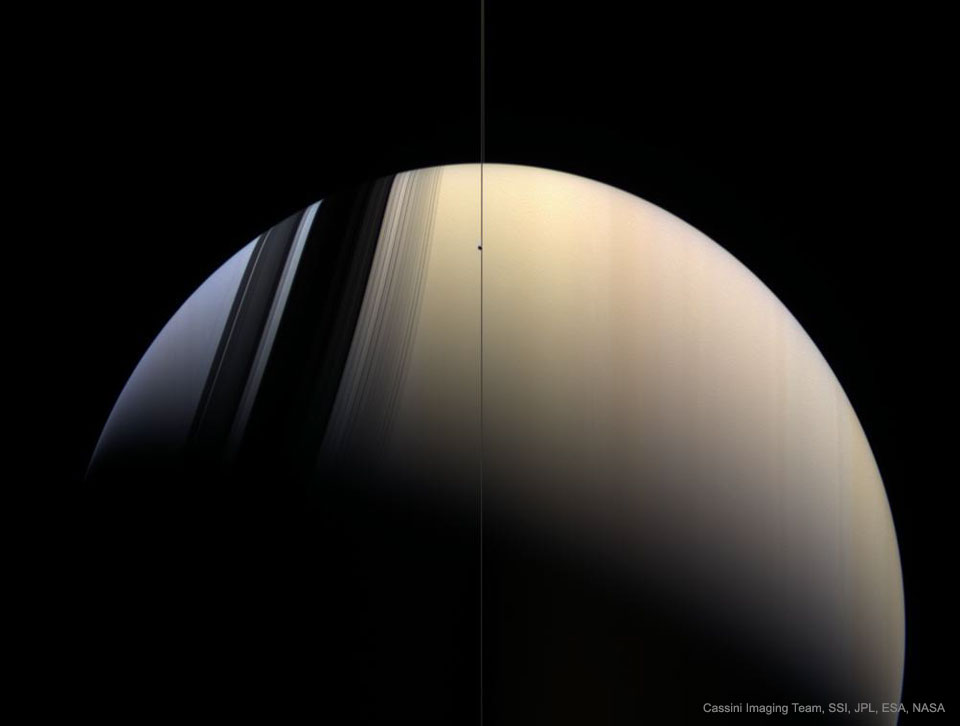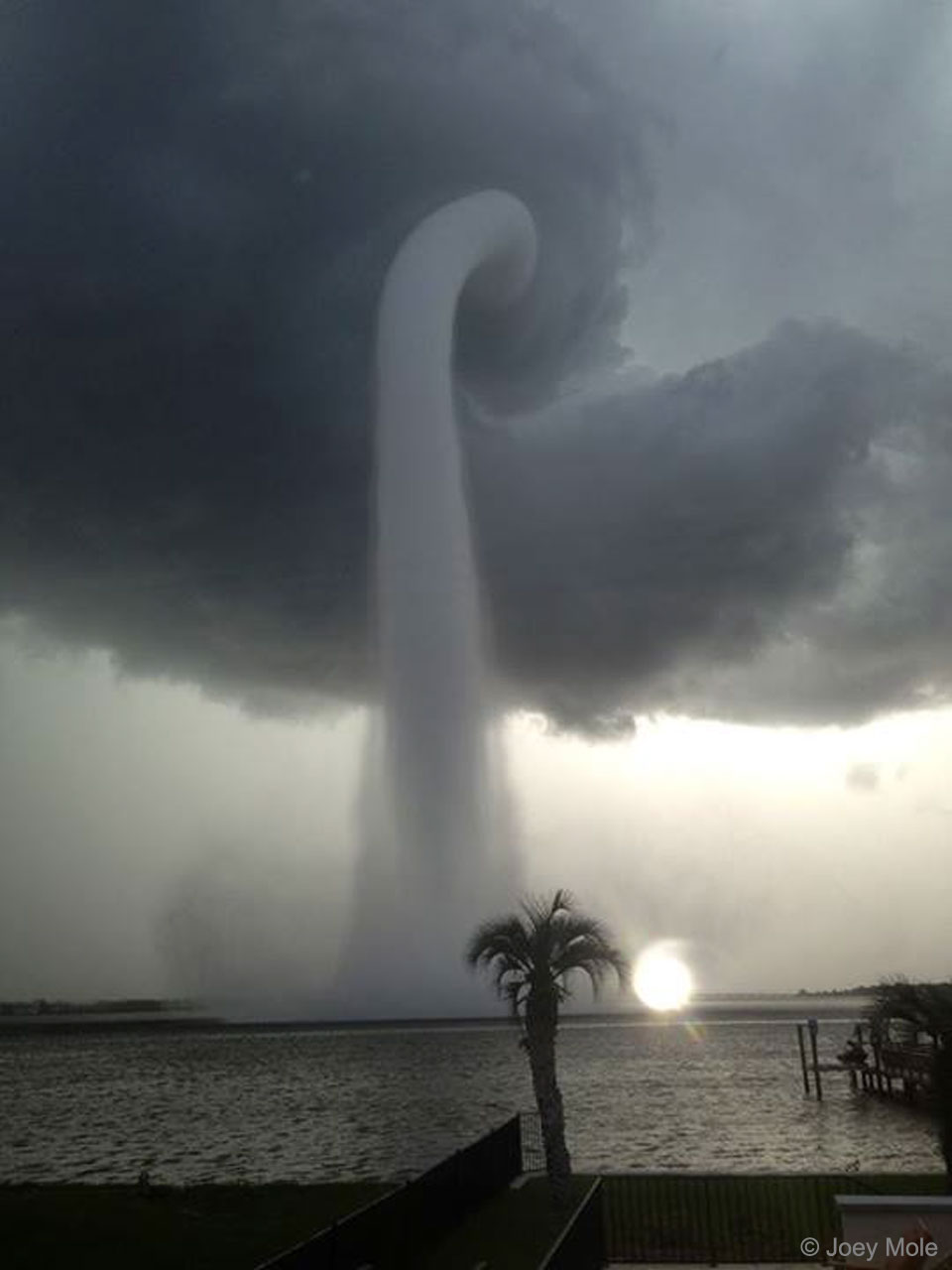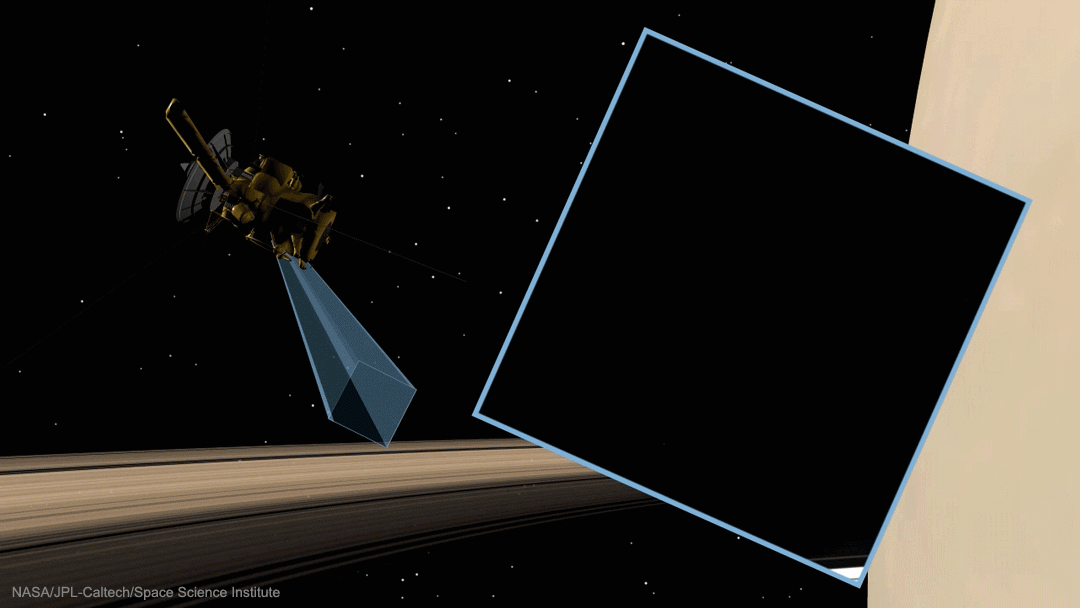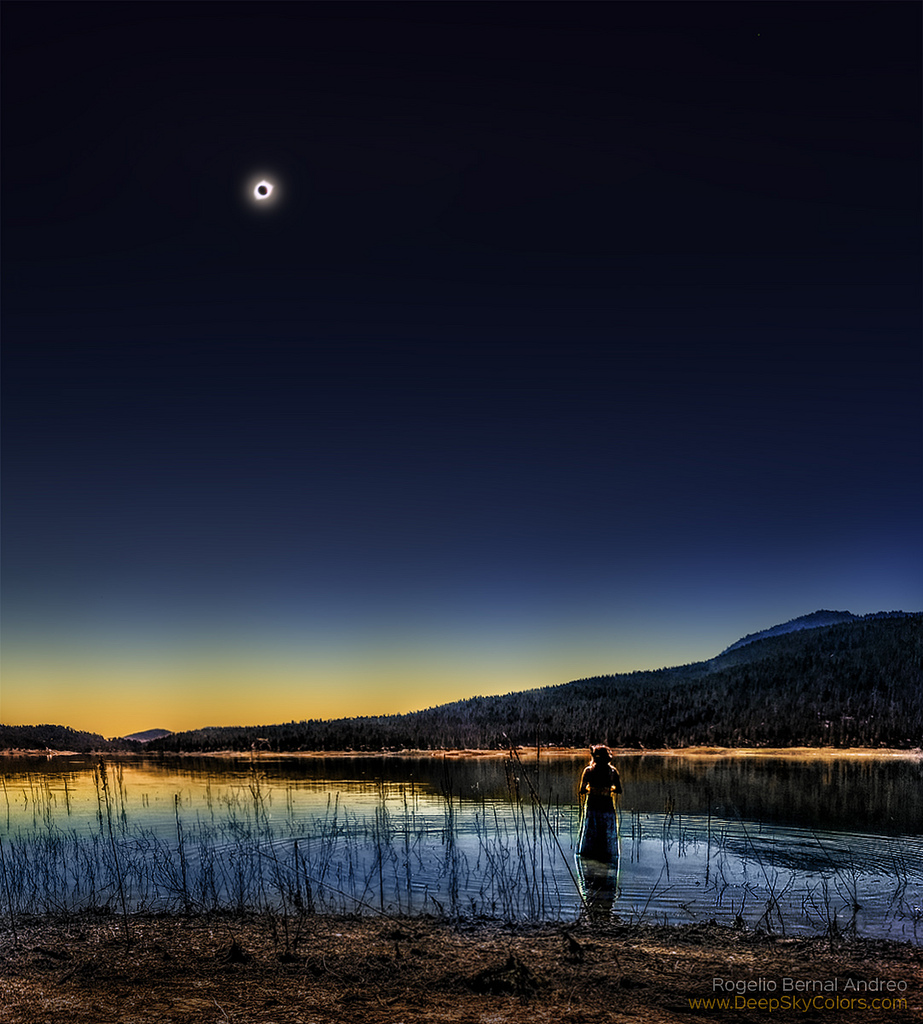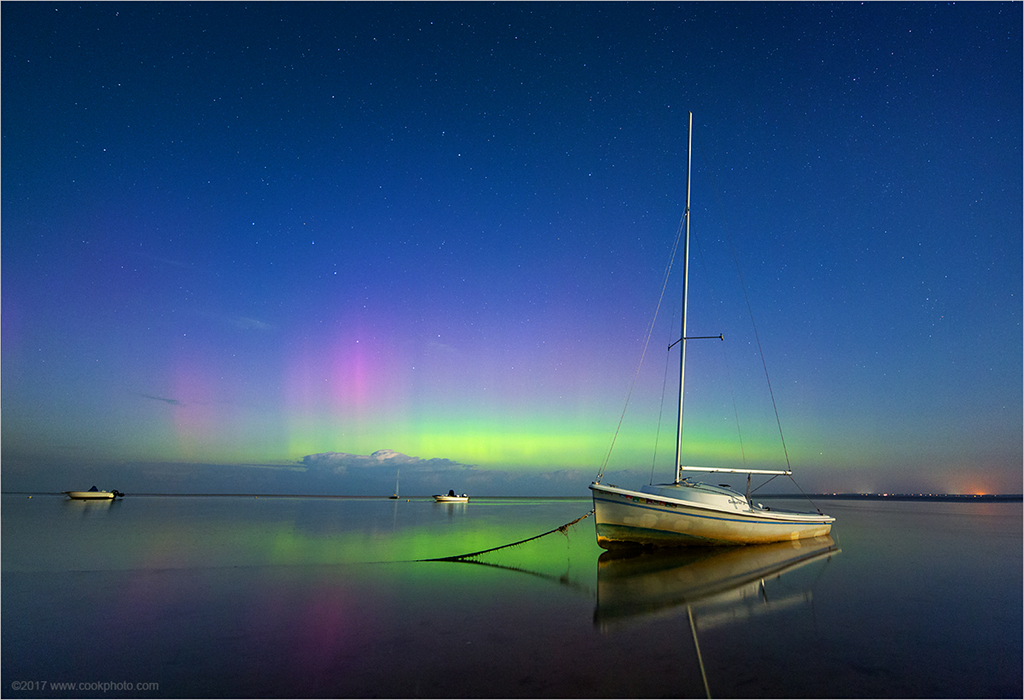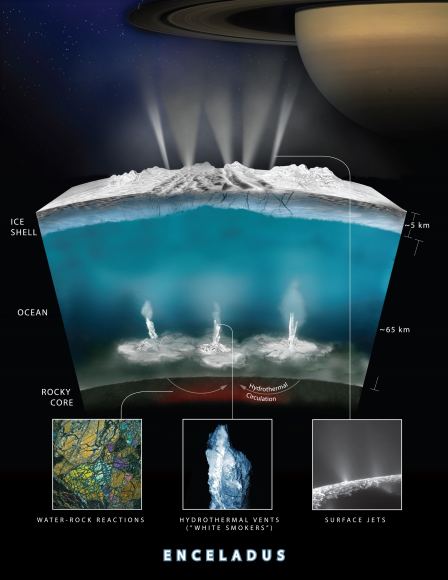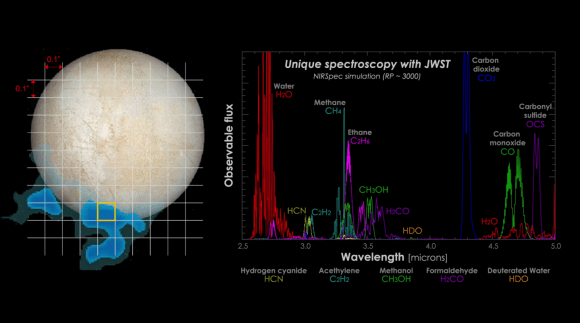New Horizons sets flight plan for 2nd target; IAU accepts Pluto system names:
Artist’s concept of NASA’s
New Horizons spacecraft flying by a possible binary 2014 MU
69 on Jan. 1, 2019. Early observations of MU69 hint at the Kuiper Belt object being either a binary orbiting pair or a contact (stuck together) pair of nearly like-sized bodies with diameters near 20 and 18 kilometers (12 and 11 miles). Image & Caption Credit: Carlos Hernandez / NASA
NASA’s
New Horizons mission has filed a
flight plan for its January 1, 2019, flyby of Kuiper Belt Object (KBO) 2014 MU
69, which will bring the spacecraft three times closer to its second target than it came to Pluto during the upcoming encounter.
New Horizons’ flyby of MU69
At a distance of more than four billion miles (6.5 billion kilometers) from Earth and approximately one billion miles (1.5 billion kilometers) beyond Pluto, the flyby will be the furthest ever encounter between a spacecraft and a planetary body.
The plan calls for the probe to pass within just 2,175 miles (3,500 kilometers) of the KBO, allowing the spacecraft’s cameras to capture images and data at higher resolutions than those taken at Pluto.
An artist’s concept of Kuiper Belt Object 2014 MU69, the next flyby target for NASA’s New Horizons mission. This binary concept is based on telescope observations made at Patagonia, Argentina, on July 17, 2017, when MU69 passed in front of a star. New Horizons scientists theorize that it could be a single body with a large chunk taken out of it, or two bodies that are close together or even touching. Image & Caption Credit: Alex Parker / NASA / JHU-APL / SwRI New Horizons’ highest-resolution camera, the Long Range Reconnaissance Imager (
LORRI), has imaged details as small as 600 feet (183 meters) in diameter on Pluto’s surface; however, on MU69, it will be able to resolve details down to a diameter of 230 feet (70 meters).
“We’re planning to fly closer to MU69 than to Pluto to get even higher resolution imagery and other datasets. The science should be spectacular,” emphasized mission Principal Investigator Alan Stern of the Southwest Research Institute (SwRI) in Boulder, Colorado.
MU69, which will become the farthest world ever visited by a spacecraft, will be studied with all seven of
New Horizons’ science instruments, which will study its geology, geophysics, and composition as well as search for an atmosphere and possible moons.
Observations of the KBO conducted in July when it passed in front of a star suggest that it could be a
binary system composed of two objects or a single object with two lobes.
New Horizons will look down on the KBO’s celestial north as it cruises by the object(s).
As done for the Pluto flyby, mission scientists and engineers have prepared an alternate flight plan that will be followed if debris is detected near MU69.
Even if the contingency plan has to be used, the probe will still come within 6,000 miles (10,000 kilometers) of the KBO, in contrast to 7,800 miles (12,500 kilometers) for Pluto.
NASA Planetary Science Director Jim Green praised
New Horizons for repeatedly pushing the boundaries of what is possible in robotic space exploration.
“I couldn’t be more excited about this encore performance from
New Horizons,” he said.
In deciding on this flight path, the mission team considered a variety of factors, including MU69’s size and shape, the desire for high-quality images, the possibility of hazardous debris nearby, and the capabilities of the spacecraft and its seven science instruments, noted team member John Spencer, also of SwRI.
On Monday, September 11, the spacecraft will be woken up from a
five-month hibernation in preparation for its 16-month journey to MU69.
Names of features on Pluto officially adopted
While the spacecraft speeds toward its second target, the International Astronomical Union (
IAU) has
announced its formal adoption of 14 names for
features on Pluto, Charon, and the system’s four small moons.
NASA’s New Horizons spacecraft captured this high-resolution enhanced color view of Pluto on July 14, 2015. (Click to enlarge) Image Credit: NASA / JHU-APL / SwRI These include
Tombaugh Regio for the “heart” feature on Pluto’s surface,
Sputnik Planitia for the icy plain on the left side of the heart,
Burney crater for a crater west of the heart,
Voyager Terra for a region northwest of the heart, and several more.
Tombaugh Regio is named for American astronomer Clyde Tombaugh, who discovered Pluto in 1930.
Sputnik Planitia is named for the first satellite ever in space, the former Soviet Union’s
Sputnik 1.
Burney crater honors Venetia Burney Phair, a British girl who, as an 11-year-old in 1930, suggested the name “Pluto” for the new discovery.
Voyager Terra honors NASA’s twin Voyager spacecraft, launched 40 years ago.
The many names assigned to mountain ranges, plains, regions, craters, and valleys on Pluto and its moons came from public input solicited as part of the “
Our Pluto” project, a joint effort between the
New Horizons mission, the IAU, and the SETI Institute of Mountain View, California, just prior to the Pluto flyby.
Names were sought for a variety of themes, including key space missions, underworld mythology, historic explorers, engineers, and scientists connected to Pluto and the Kuiper Belt, and even fictional locations from popular fantasy and science fiction literature, television, and movies.
“The approved designations honor many people and space missions who paved the way for the historic exploration of Pluto and the Kuiper Belt, the farthest worlds ever explored,” Stern said.
Rita Schultz, chair of the IAU Working Group for Planetary System Nomenclature, thanked both the public and members of the mission team for the name suggestions.
Along with Stern, mission scientists Mark Showalter, Ross Beyer, Will Grundy, William McKinnon, Jeff Moore, Cathy Olkin, Paul Schenk, and Amanda Zangari participated in
New Horizons’ Nomenclature Working Group, which worked in concert with the IAU group.
“I’m delighted that most of the approved names were originally recommended by members of the public,” said Showalter of the SETI Institute.
The 14 names approved are only the first proposed by the mission team. Many more will be submitted by
New Horizons scientists to the IAU in the near future.
The following names have been approved:
Tombaugh Regio honors Clyde Tombaugh (1906–1997), the U.S. astronomer who discovered Pluto in 1930 from Lowell Observatory in Arizona.
Burney crater honors Venetia Burney (1918–2009) who, as an 11-year-old schoolgirl, suggested the name “Pluto” for Clyde Tombaugh’s newly discovered planet. Later in life, she taught mathematics and economics.
Sputnik Planitia is a large plain named for Sputnik 1, the first space satellite, launched by the Soviet Union in 1957.
Tenzing Montes and Hillary Montes are mountain ranges honoring Tenzing Norgay (1914–1986) and Sir Edmund Hillary (1919–2008), the Indian/Nepali Sherpa and New Zealand mountaineer were the first to reach the summit of Mount Everest and return safely.
Al-Idrisi Montes honors Ash-Sharif al-Idrisi (1100–1165/66), a noted Arab mapmaker and geographer whose landmark work of medieval geography is sometimes translated as “The Pleasure of Him Who Longs to Cross the Horizons.”
Djanggawul Fossae defines a network of long, narrow depressions named for the Djanggawuls, three ancestral beings in indigenous Australian mythology who traveled between the island of the dead and Australia, creating the landscape and filling it with vegetation.
Sleipnir Fossa is named for the powerful, eight-legged horse of Norse mythology that carried the god Odin into the underworld.
Virgil Fossae honors Virgil, one of the greatest Roman poets and Dante’s fictional guide through hell and purgatory in the Divine Comedy.
Adlivun Cavus is a deep depression named for Adlivun, the underworld in Inuit mythology.
Hayabusa Terra is a large land mass saluting the Japanese spacecraft and mission (2003–2010) that performed the first asteroid sample return.
Voyager Terra honors the pair of NASA spacecraft, launched in 1977, that performed the first “grand tour” of all four giant planets. The twin Voyager spacecraft are now probing the boundary between the Sun and interstellar space.
Tartarus Dorsa is a ridge named for Tartarus, the deepest, darkest pit of the underworld in Greek mythology.
Elliot crater recognizes James L. Elliot (1943–2011), an MIT researcher who pioneered the use of stellar occultations to study the Solar System – leading to discoveries such as the rings of Uranus and the first detection of Pluto’s thin atmosphere.
Pluto’s first official surface-feature names are marked on this map, compiled from images and data gathered by NASA’s
New Horizons spacecraft during its flight through the Pluto system in 2015. Image & Caption Credit: NASA / JHU-APL / SwRI / Ross Beyer
The post
New Horizons sets flight plan for 2nd target; IAU accepts Pluto system names appeared first on
SpaceFlight Insider.
